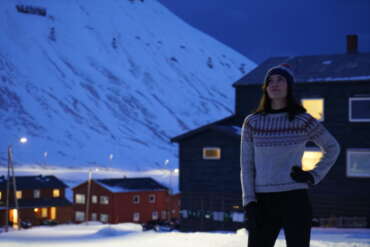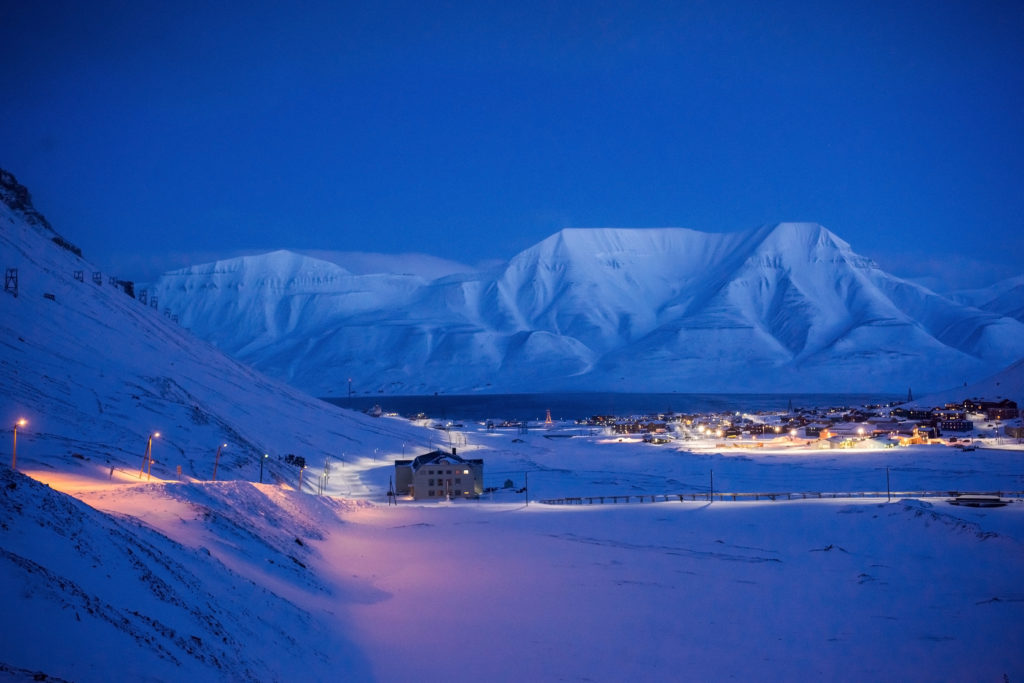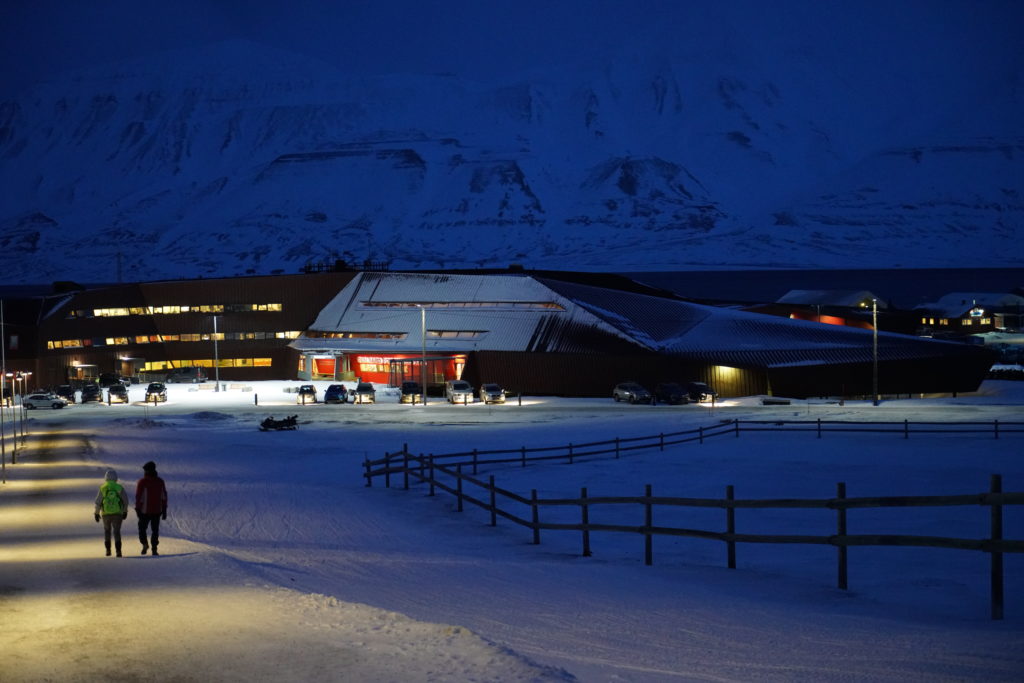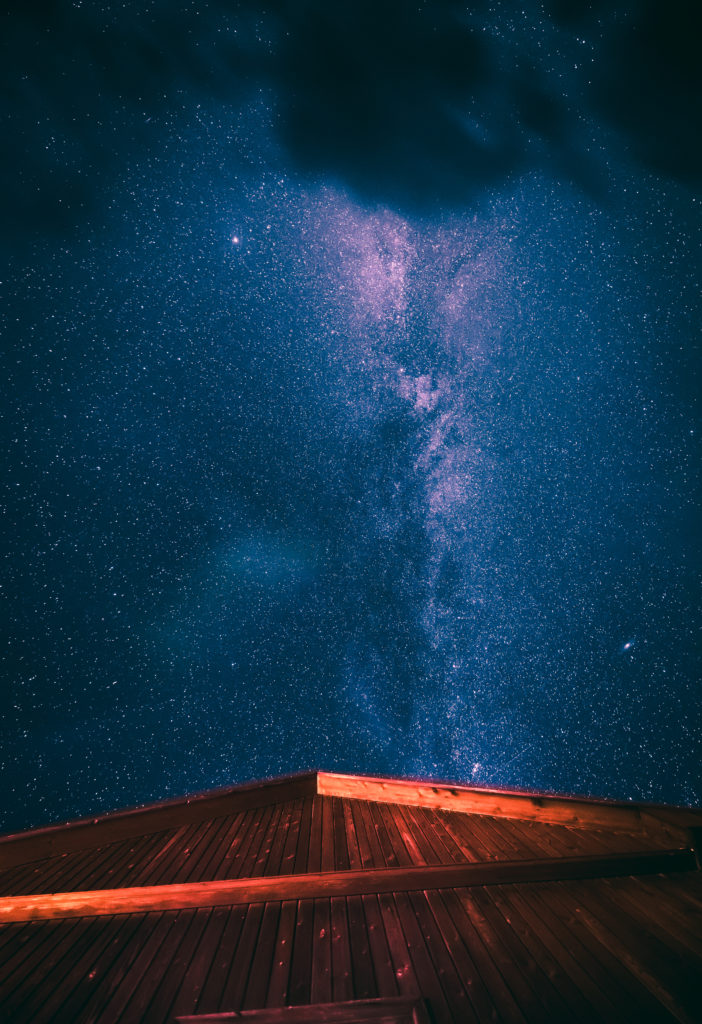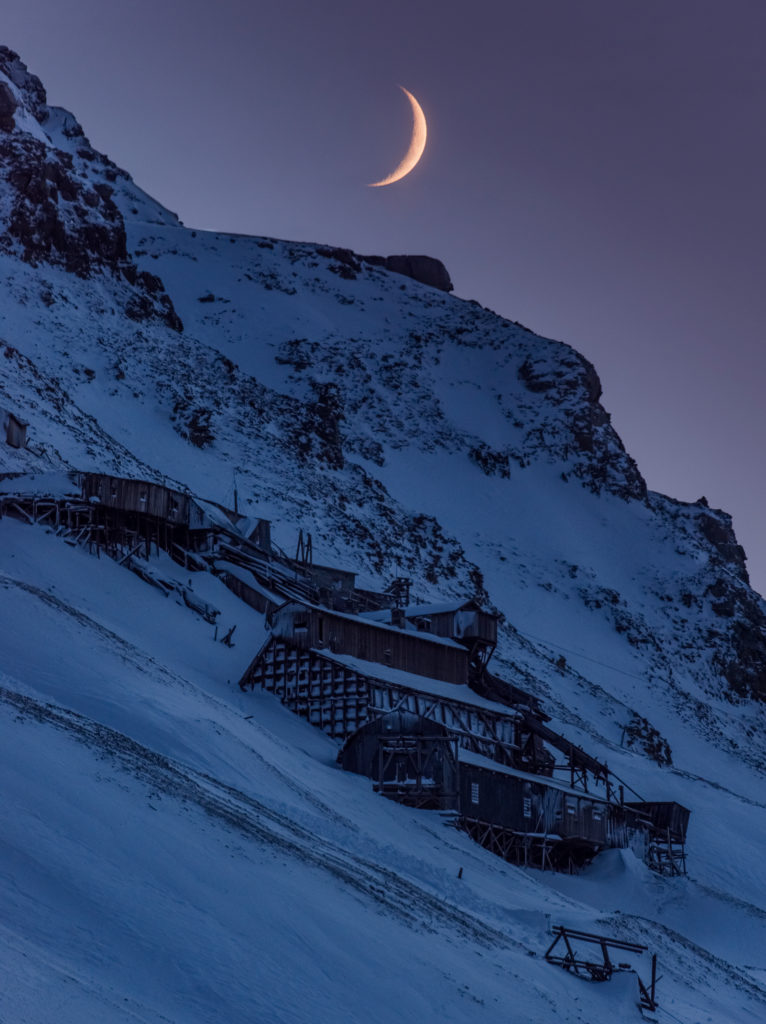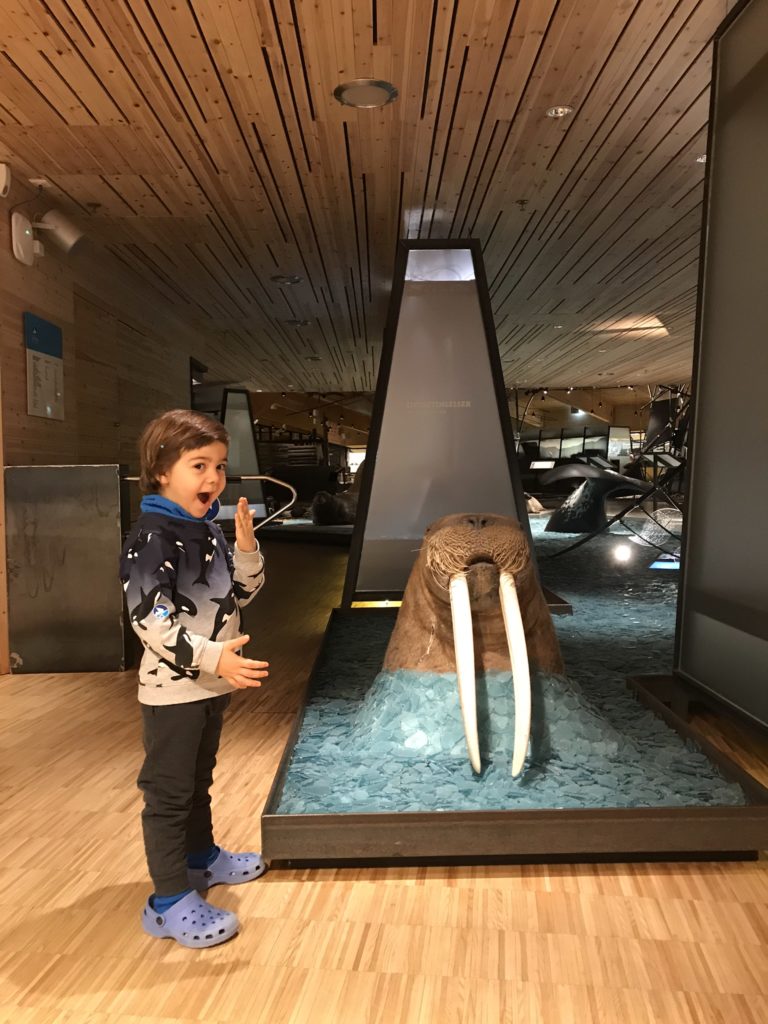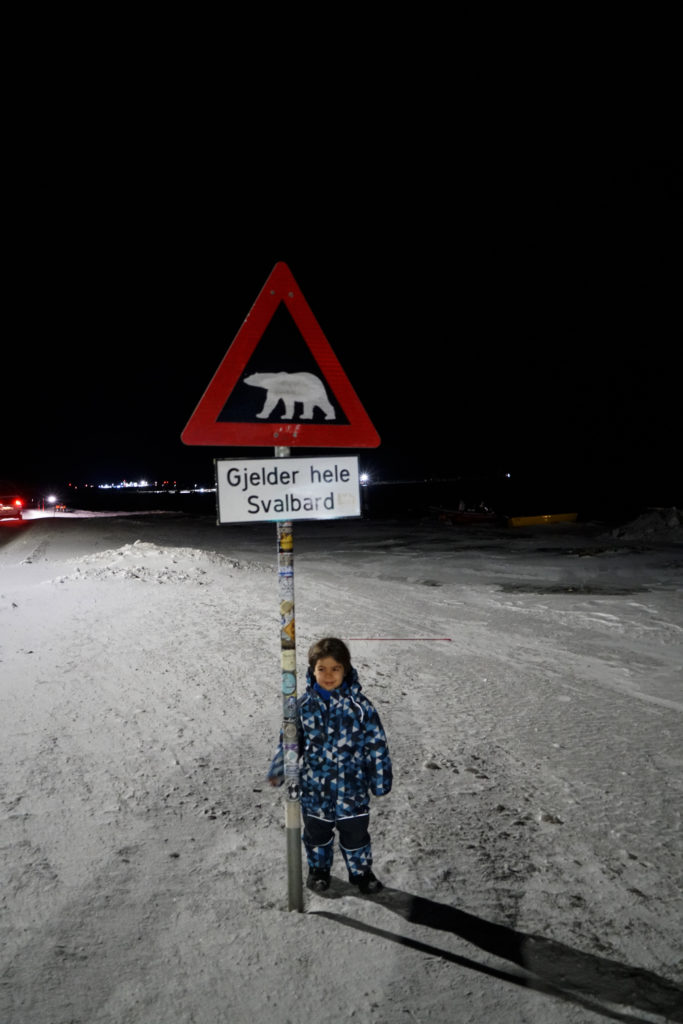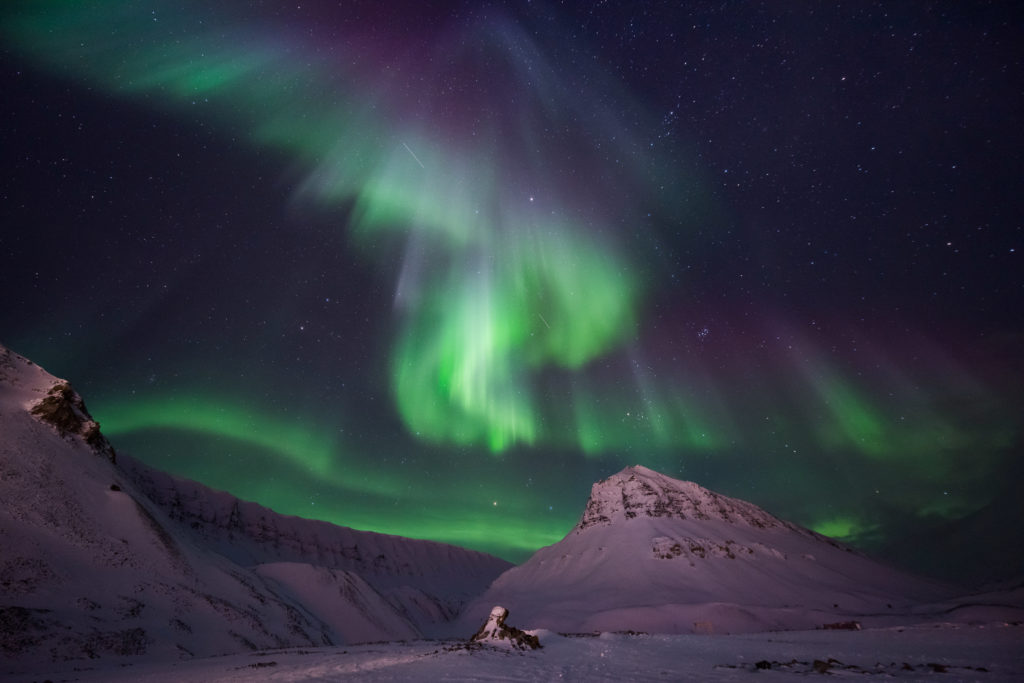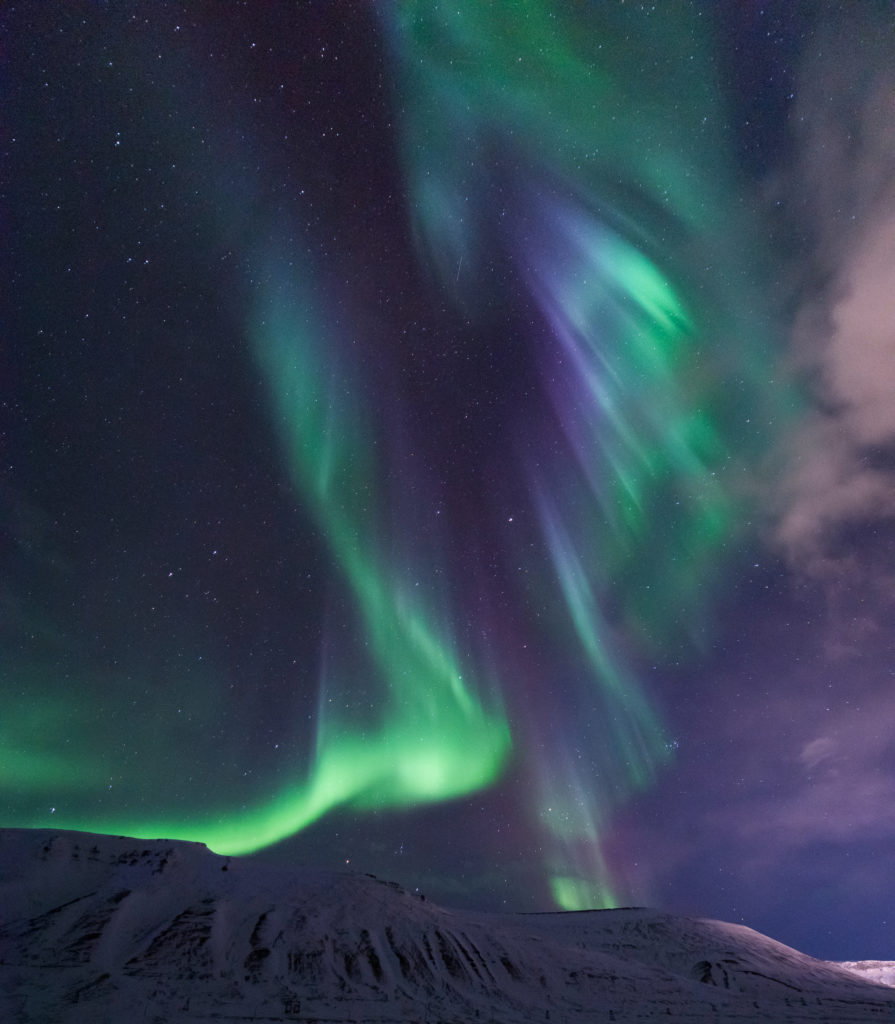THE KEY OF NORTHERN POLE
Sometimes a photo, a movie or a person pulls you there. You feel that you really want to go, you start dreaming about it first and then you start thinking how? You get excited just thinking about it. “How can it be so different?” “Can I really go there? “
Svalbard… beyond the North Pole… Beyond it, there is no life. Inborn winter, where the summer sun keeps playing around without setting, where the northern lights are dancing, where the word “cold” isn’t enough at all, the homeland of polar bears.
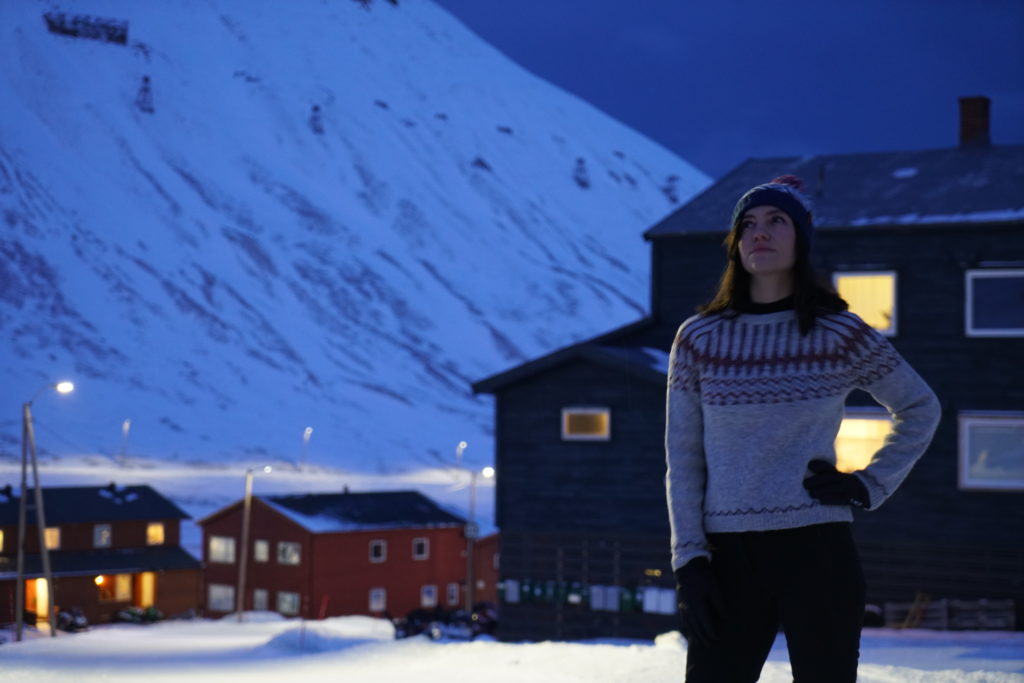
That’s how we started to plan for Svalbard. From the beginning, we were sure that it wasn’t going to look like any of the places we visited before. In fact, we were so confident that when we told people we were going to Svalbard, we have never been asked for any other place we have visited the question “Why are you going?” this much, and that question is exactly what made us want to go there all that badly.
We were so excited. We’ve been to the north pole before but, we have never been this far North. We made a very brave decision by selecting mid-January in the middle of the black winter to go on this trip and by that I can say we literally registered for the finals of the TV show the Survivor. The plane we were taking from Tromso had already begun to fly north for an hour and a half ride journey. The sun was going northward from us and after a while, it said, “I’m waiting for you in the south” and waved goodbye.
Despite the increasingly darkening air, we have descended to a place where mountain tops covered in snow were surging the sky.
Svalbard greeted us with a cold breeze that hit our faces like a razor blade; but we got it; it was just a way to welcome us. Although it was noon, the weather was as dark as midnight. We already started getting confused about time on our way to the hotel.Svalbard greeted us with a cold breeze that hit our faces like a razor blade; but we got it; it was just a way to welcome us. Although it was noon, the weather was as dark as midnight. We already started getting confused about time on our way to the hotel.
The ride from the airport to the city was 10 minutes. The snow-white mountains, which can be seen by the moonlight reflected on the white snow, accompanied us along the way. As soon as we entered the city of Longyearbyen, which was named after the mineralogist, John Munro LONGYEARBYEN who came here in 1906 and life began here because of him. Snow motorcycles parked in front of the houses, people wearing phosphor vests to be seen in the dark and baseless houses were the first things to attract our attention.
As a miner’s old tradition, we were asked to remove our shoes when we entered the hotel. We stayed with our socks on, but we surely liked it. The tradition might be old but mining is still popular here. This was the purpose of life in Svalbard in the first place. The most extracted mine is coal, but it is not the one that we know and burn in fireboxes, it’s the more valuable one… Anthracite.
The number of miners has dropped from thousands years ago to below almost 100 today. The miners left their places for technology and went away. But all the facilities that were used in that period and the roads where the wagons were transported are still the same. Since the demolition of the buildings is prohibited, everything is just like the first day.
Still expecting the sun to rise but not yet. Our brains aren’t accepting the absence of the sun that we are used to for years. We believe it’s going to rise at any moment, but nothing. This is the first answer to the question Why Svalbard? That’s why!
There are 3 seasons in Svalbard. The northern lights from October 1 to February 28 is winter (dark), sunny winter (twilight) from 1 March to 16 May and polar summer (bright) from 17 May to 30 September. We’re in the dark 24 hours season. It sounds like a night without a morning, but our clock constantly denies it. We had to lose hope from the sun.
In the freezing cold, there are no names, only numbers for streets and buildings awaiting us. The fact that it lies very north and in a difficult geography has not prevented the flow of life. Beautiful cafes, bars and restaurants, a very well-formed museum, a huge pool, sports centers where all sports can be done, cinema and many more surprisingly beautiful places to offer for a better life. They are the meeting points of about 2100 inhabitants out of 2600. I did not include the rest of them in the number because they don’t live in Longyearbyen. Yes, there are people who live outside Longyearbyen. Barentsburg is home to 471 people. NASA is base a home for a population of 35 people, and the northernmost North Ny Alesund with only 6 inhabitants of the Pyramiden.

There is an animal which does not complain at all about the small number of people in Svalbard. Polar bears, who are the original owners of this land. They live in their natural habitat in the wildness and are in a larger number than the number of people mentioned above. Those white giants… The pole is even named after them because they are the symbol of these lands and they are under protection. Every place outside the city limits belongs to them. If you have a plan to go out of the city limits, you have to carry a weapon with you.
This weapon isn’t for killing the polar bears it’s just to scare them if you come across one. If you kill one, the penalty of killing a human awaits you. What warns you not to get around without a weapon is a polar bear sign which is only found in Svalbard. “polar bear danger outside this area”, perhaps the most famous traffic sign in the world.
There aren’t only polar bears in these cold lands, giant walruses, whales, seals, polar foxes and the polar deer which appear suddenly out of nowhere, are free to roam in the city and forbidden to be fed. If you are asking us which ones we have seen, well, of course we have seen all of them in the museum in their lifeless statue, because outside we were barely able to find our way in the dark.
I guess our biological clock couldn’t keep up with living in dark all the time. We were randomly feeling hungry. Always moving in a hurry and checking the clock. As if we slept through the day and we went out in the evening and we shouldn’t stay out for a long time, or it’s going to be pretty dark, we got such interesting feelings like we should soon go to bed. While we were trying to deal with these feelings, local people with their phosphorescent vests were living their natural life.
Although it is connected to Norway, it has its own bylaws. They make their own choices and choose their own rulers. Even if you live there for 3 years, you get to vote too.
If you are wondering about how you can live here for 3 years, everyone is given the right to live in Svalbard. You just need to to finance yourself. Either by working there, or by your personal savings. You might think who would want to live here? But don’t be judging, there are really good reasons to live in Svalbard.
First and most importantly, there are no bacteria and viruses here because of the extreme cold. That means zero disease! Yes, people who live here are never sick. However, once you get out of here, unfortunately, within 48 hours you have no idea which disease you might catch.
Education. They claim that the schools they have are the best schools on the planet. Totally free of fees and without examination. Children between the ages of 6-16 can get education in every subject they want to learn. This can be a branch of art, a sports branch or an academic course. The language you speak isn’t a problem at all. Because, no matter what language the student speaks, if he / she is starting school, a teacher who speaks that language is urgently brought from Norway. In addition to schools, there is even an advanced university in the far north of the world.
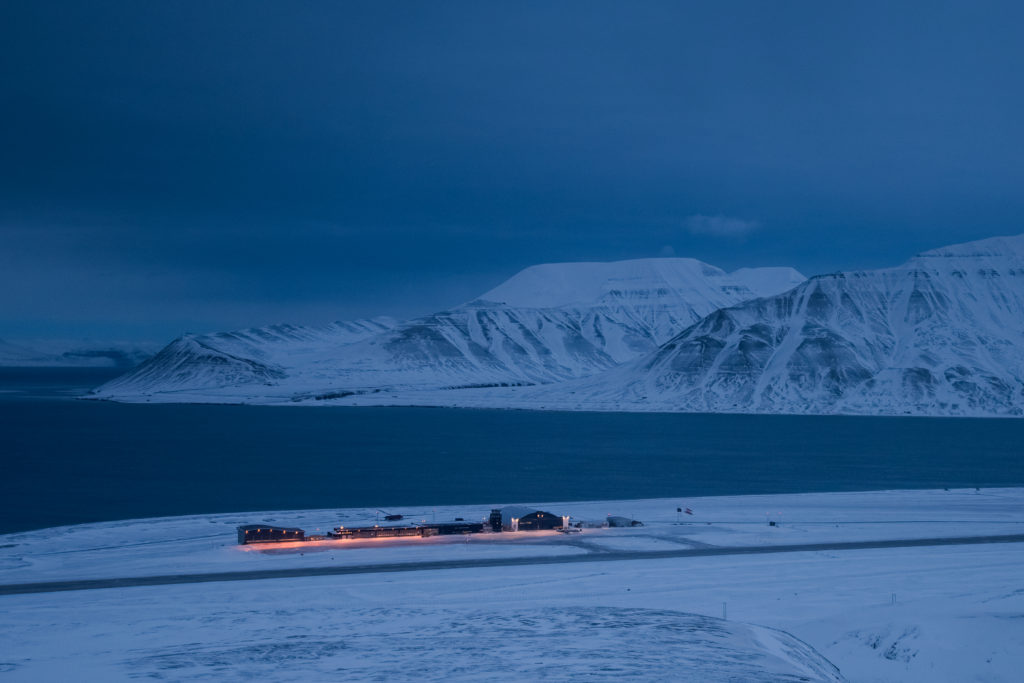
Less tax and higher salary. Nearly half of the taxes in Norway, and what you gain from working is much more. It’s a win win deal. I never thought that I’ll be saying such a sentence,” Northern lights are to my south”. Yes, I’ve lived it. The Northern Lights, one of the most beautiful blessings Svalbard offers us, passed on our south for a total of 3 days. Leaving our misfortune aside, it’s dark for 24 hours, so if you’re likely to see lights at any moment. That absolutely sounds very nice.
Time for us stopped here. We started to think that it isn’t passing. The locals always mentioning the day when the sun will rise reminded us. 8th of March gathering in front of the world’s farthest north churches waiting for the day when the sun will be seen. They count minute by minute till dawn. Here we all understood very well, the fact that we see the sun every morning and we don’t give much attention, is actually very important.
These dark days have a bright state. Sun is constantly up the hill drawing circles at all times. This was nice to hear at first, but the local people like the darkness more. Because the luminous period creates much more problems for their biological clocks. Their bodies and minds want to stay awake; they can’t sleep. It may be nice for a short time, but not for a long time.
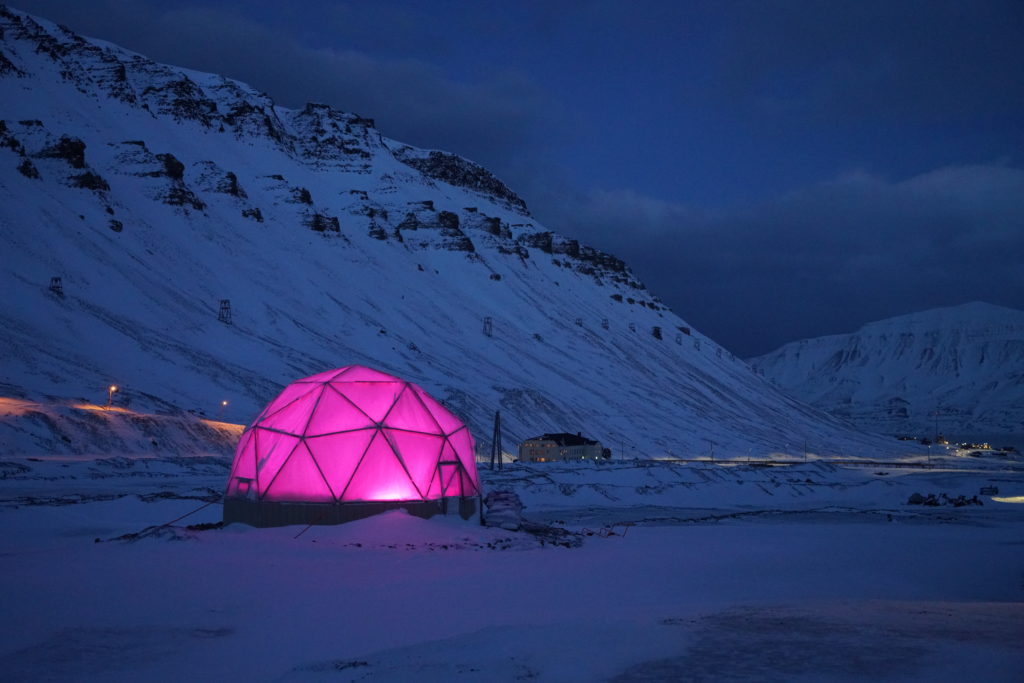
In addition to not seeing the sun for a few days, we also couldn’t see any other living. Because of the frozen soil called “permafrost” which extends 50 cm inside the ground, the trees and plants do not grow in Svalbard. All needs are brought from the mainland.
The only greens grown are lichens and algae, which can be seen in the summer. Because of this permafrost, the sewers of the buildings and the cable connections are always passed underground. Even buildings don’t have any foundation, they are all prefabricated. Also, it is forbidden to die in Svalbard, how and why? Because there’s no cemetery here. Once they buried 35 people who died many years ago, and when the weather got warmer and the snow melted, the dead bodies appeared on the surface of the soil and they were unspoiled. When they saw this, they decided to stop burying people in Svalbard and take the all the dead to be buried in Norway.
We are constantly learning new things. Things we’ve never heard about and unlike anything we’ve seen, just like the Seeds warehouse. There is a very special place here. Perhaps it seems simple in writing, but when you stand in front of that door and think that the future of the world is behind it, the weight of knowing that will make you shudder like it did to me.
In case of extinction or scarcity, a warehouse for the re-sustainability of life was made. The Global Seed Vault is a warehouse where all species of seeds from all countries around the world are stored.
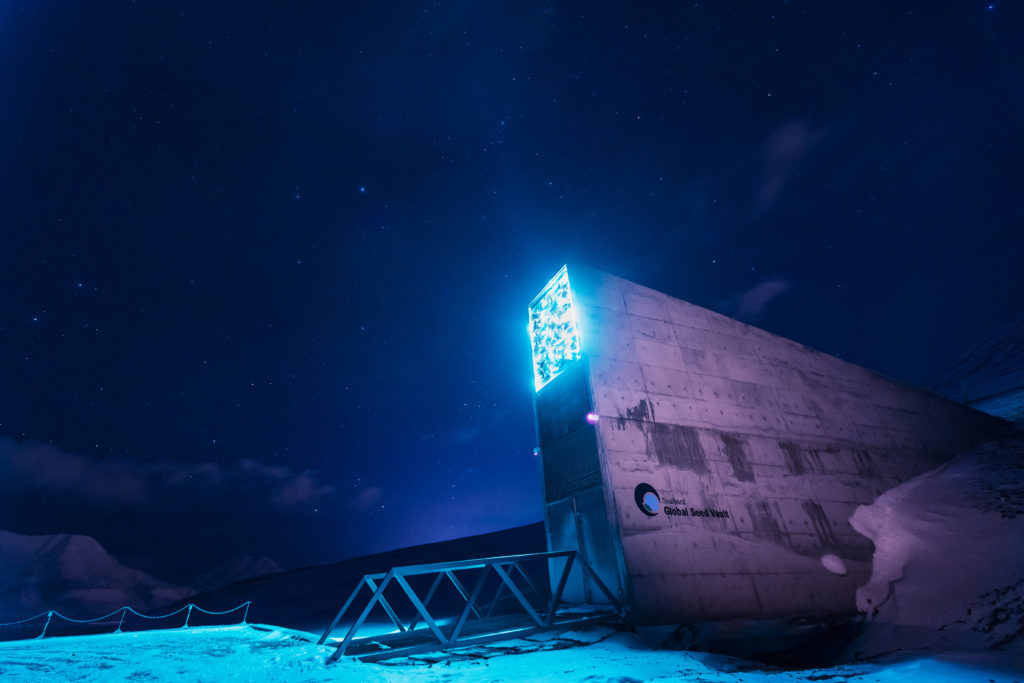
After the warehouse, when we saw the giant radars and observation houses that studied every small detail of the space and the sky, and explored the climates and the ozone layer, we knew for sure how so much was done for our world here.
We’ve come to the end of our days in the silence of the North, the black and dark winter. We’re already counting days to see the light again. It’s time to return from this point where Europe ends.
We were in complex emotions on our way to catch the plane which will take us to Oslo. Can we live here? None of us could answer this question. But we were very sure that this was the most educational among all our travels. We have rethought about the factors in our life cycle that we underappreciated or sometimes didn’t even realize before. From now on when I wake up every morning and see the sun, I’ll be very thankful for it.
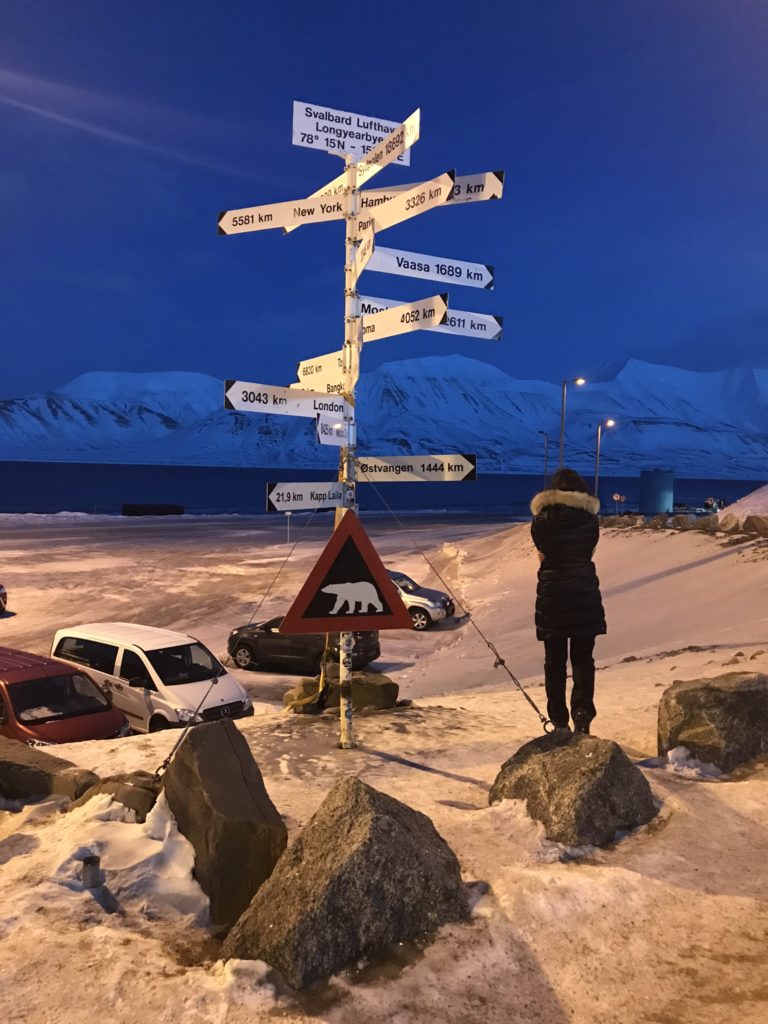
Short story long
- Flights to Svalbard are from Oslo and Tromso.
- Svalbard doesn’t require a visa. But since the flights are from Norway, you need to have a valid Norwegian visa.
- Norway accepts Schengen visa.
- If you have a trip to Svalbard, your Norwegian visa must be a multiple entry, otherwise when you are on your way back from Svalbard you won’t be able to re-enter Norway.
- You can live and work without residence permit.
- Norwegian Krone (NOK), Euro, US dollars are the currencies used in Svalbard.
- Credit card usage is very common.
- You can use sim cards from Norway.
- Their internet is the fastest in the world.
- Alcohol consumption is limited (24 boxes of beer per month, 2 bottles of liquor, no wine limit)
- Tourists need to show their flight tickets to buy alcoholic beverages.
- Average rental prices are around 1300 euros.
- Using a drone is prohibited in Longyearbyen.
- Crime rate is zero.
- In winter the temperature’s average is between -20 to -30, in summer it’s from 3 to 7 degrees Celsius.
- The Seeds warehouse, “Global Seed Vault “has 3 keys to reach the seeds. The first is in the seed-giving country, the second is with the manager of the project, and the third is with the person responsible for the safety of the place. It is only possible to reach the seeds when the 3 keys are there at the same time.
- The Global Seed Vault is resistant to even a nuclear bomb.
- It’s much more possible to explore the island in the summer time during the light period. Glacial tours, husky, snowmobile safari, Barentsburg-Pyramiden trips, whale watching etc. For details visit; www.visitsvalbard.co
- There are buses between the airport and the city. They drop you at exactly where you’re going to stay. Buses accept credit cards. The ride per adult is 75 NOK, and the round trip is 105 NOK. (Student: 50 NOK Children: 25 NOK)
- Batteries of phones and cameras can run out of charge quickly because of the extreme cold. Make sure to have alternatives available.
- It’s a kid-friendly place to visit for families.
